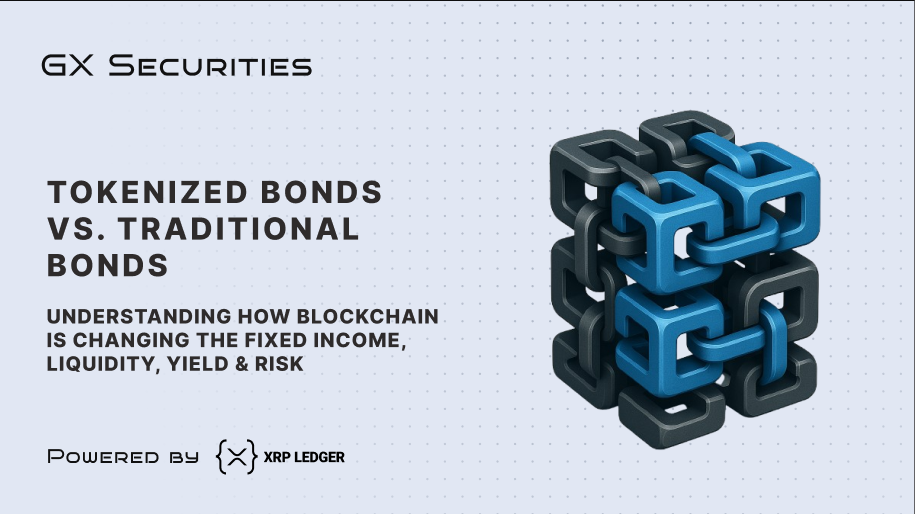
Fixed income has always been a pillar of stability in global markets. But behind that steady reputation lies an infrastructure that hasn’t changed much in years. Settling trades can still take days. Custody and recordkeeping often rely on siloed systems. And for private or emerging market debt, inefficiencies are even more noticeable long processes, high costs and limited transparency are still the norm. As digital tools mature, the fixed income world is starting to modernize, not just to keep up, but to work better.
As financial institutions adopt digital ledger technology (DLT), a new fixed income model is emerging: tokenized bonds. These digital instruments mirror traditional debt structures but are issued and managed on blockchain-based systems. The result is not a reinvention of bonds, but a modernization of how they move and behave within the market.
Tokenized bonds represent a debt instrument, just like traditional bonds but issued in digital form on a blockchain. Key characteristics remain the same:
However, the tokenized format introduces enhancements:
Tokenized bonds typically operate on permissioned or hybrid DLT systems, allowing for investor verification, transaction monitoring and audit trails.
Insight: While tokenized bonds improve the mechanics of liquidity, market depth and participation are still developing. Institutional adoption and regulated trading venues will be key to unlocking meaningful liquidity.
Tokenization doesn't change the fundamental yield of a bond but it reduces frictional costs:
Over time, this could translate into better net returns for investors and lower cost of capital for issuers, especially in private debt, structured credit and ESG-linked issuances.
However, tokenized products may also price in an adoption risk premium during early market development due to limited historical data and unfamiliar infrastructure.
Tokenized bonds introduce new risk controls but also new considerations:
Key takeaway: Tokenized bonds may reduce operational risk but introduce a layer of technology and legal complexity that institutions must evaluate carefully.
Tokenized bonds are moving from proof-of-concept to real issuance. The European Investment Bank, central banks and corporate issuers have already executed tokenized debt offerings under regulated pilot programs.
Tokenized bonds won’t replace traditional bonds overnight but they are changing the infrastructure layer beneath fixed income. For institutional investors, this shift brings:
As the ecosystem matures, fixed income desks will need to assess how and when tokenized bonds fit into their strategy.
Discover how GX Securities leverages the XRP Ledger for compliant DeFi infrastructure and tokenized asset operations on XRPL | Contact us at compliance@gxsecurities.com or send us an inquiry
Disclaimer
GX Securities operates solely as a DLT infrastructure provider and this article does not constitute financial advice or an offer of securities.
By entering, you confirm that you are an institutional or professional investor eligible under applicable regulations. Retail investors are not permitted. If you are not eligible, please exit.
GX Securities is a DLT infrastructure provider and does not offer investment services, advice or custody. DLT securities content is informational only and not an offer or solicitation.
I acknowledge and agree to the
Terms of Use
Privacy Policy